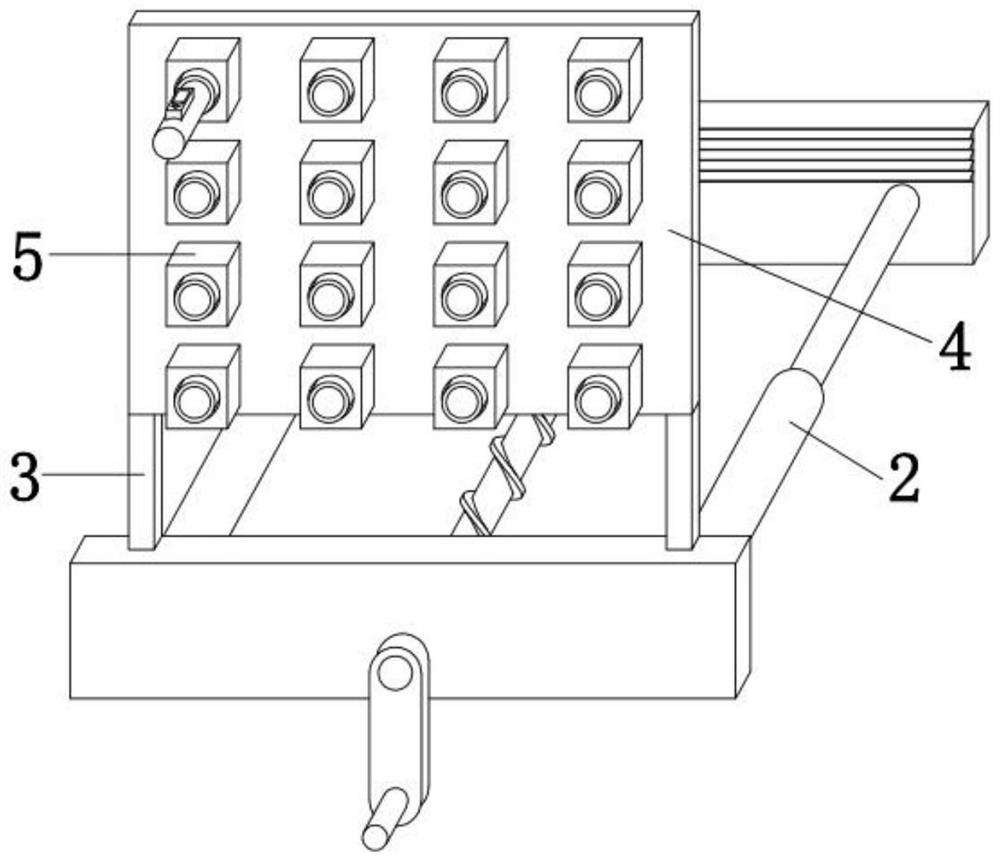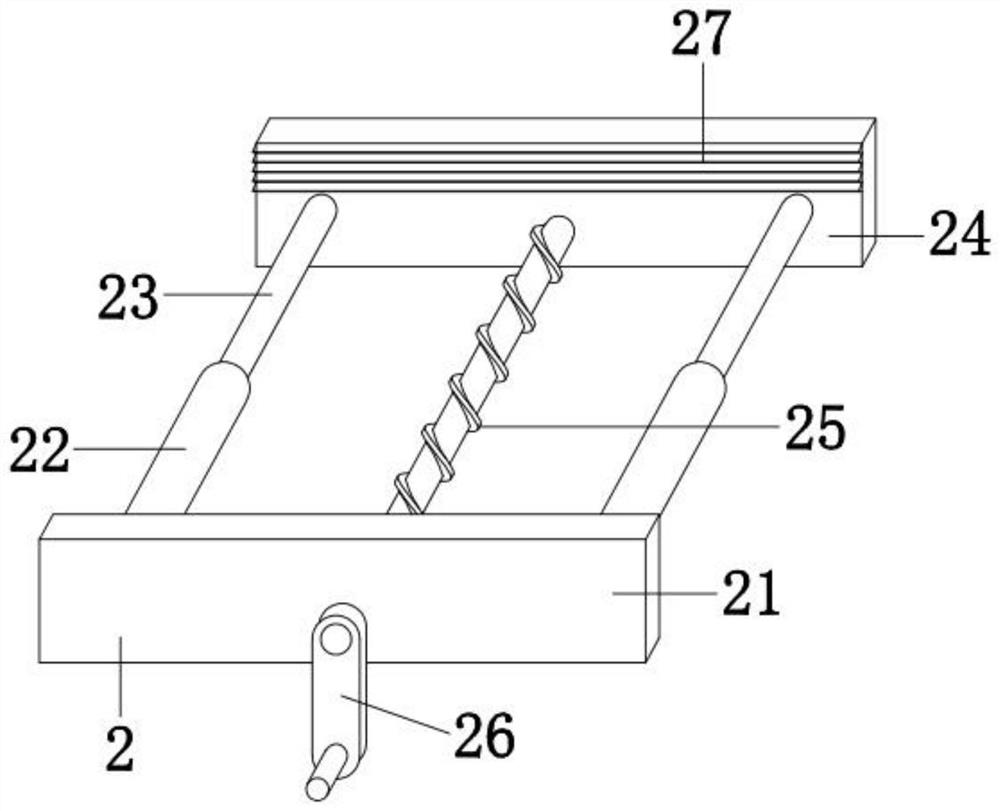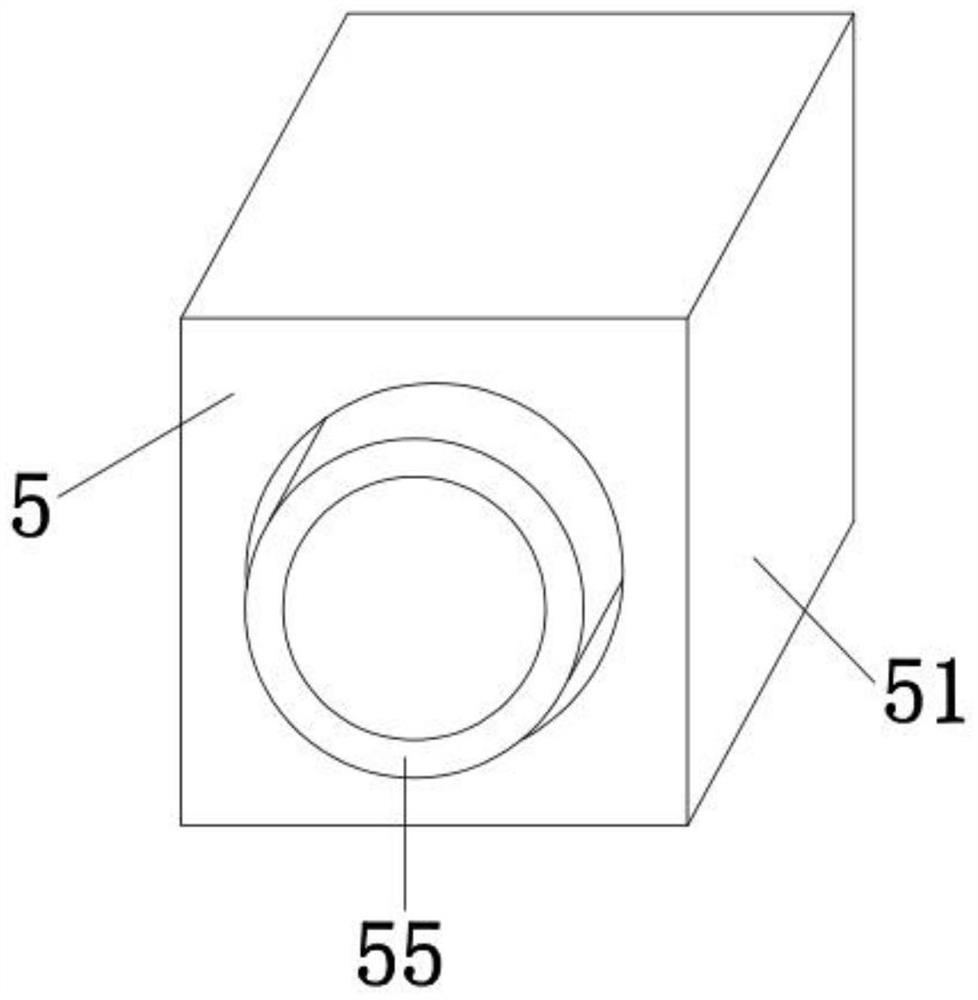Concrete rebound test auxiliary device for surveying and mapping engineering
An auxiliary device and concrete technology, applied in the field of surveying and mapping engineering, can solve the problems of time-consuming and laborious, poor measurement accuracy, and achieve the effect of accurate position and guaranteed accuracy
- Summary
- Abstract
- Description
- Claims
- Application Information
AI Technical Summary
Problems solved by technology
Method used
Image
Examples
Embodiment Construction
[0034] The following will clearly and completely describe the technical solutions in the embodiments of the present invention with reference to the accompanying drawings in the embodiments of the present invention. Obviously, the described embodiments are only some, not all, embodiments of the present invention. Based on the embodiments of the present invention, all other embodiments obtained by persons of ordinary skill in the art without making creative efforts belong to the protection scope of the present invention.
[0035] see Figure 1-5 , the present invention provides a technical solution: a concrete rebound test auxiliary device for surveying and mapping engineering, including a fixing mechanism 2, a support rod 3, a base plate 4 and a booster mechanism 5, and the two support rods 3 are respectively detachably arranged on the fixing mechanism 2, the left and right ends of the top front side, the base plate 4 is detachably arranged on the top of the support rod 3, and ...
PUM
 Login to View More
Login to View More Abstract
Description
Claims
Application Information
 Login to View More
Login to View More - R&D
- Intellectual Property
- Life Sciences
- Materials
- Tech Scout
- Unparalleled Data Quality
- Higher Quality Content
- 60% Fewer Hallucinations
Browse by: Latest US Patents, China's latest patents, Technical Efficacy Thesaurus, Application Domain, Technology Topic, Popular Technical Reports.
© 2025 PatSnap. All rights reserved.Legal|Privacy policy|Modern Slavery Act Transparency Statement|Sitemap|About US| Contact US: help@patsnap.com



